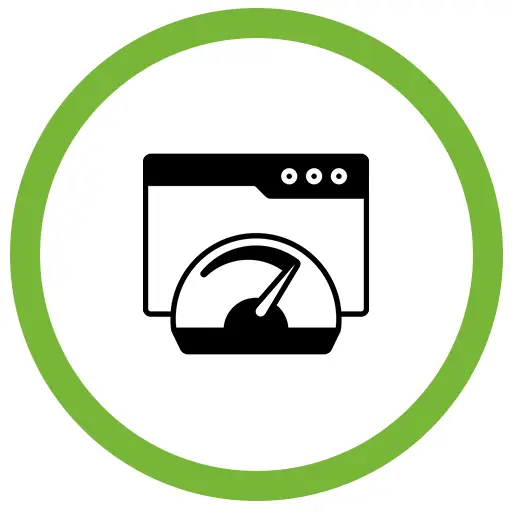7 Foolproof Keys to Digitizing Physical Records in Colombia
The digitization of physical records has become a strategic priority for both public and private companies in Colombia. In an increasingly digital world, keeping paper documents not only represents an operational burden but also poses a risk to organizational security and efficiency. Transitioning to digital records is a key step in the modernization of business processes.
In Colombia, this process has gained significant importance due to legal requirements, opportunities for resource optimization, and the need to improve access to information. Companies that adopt the digitization of physical records are better prepared to face the current challenges of the digital environment.
Why is the digitization of physical records essential?
The benefits of implementing a physical records digitization system are broad and tangible:
- Document security: Digital documents can be protected through encryption, user authentication, and automatic backups.
- Physical space savings: There's no longer a need to maintain large storage rooms or warehouses full of paper.
- Immediate accessibility: Digitized files can be accessed from anywhere, at any time, using a computer, tablet, or phone.
- Cost reduction: It eliminates expenses associated with paper, physical maintenance, transportation, and storage.
- Regulatory compliance: It facilitates audits and document tracking, especially in regulated sectors.

1. Initial Assessment and Diagnosis
Before starting any physical records digitization project, it is essential to conduct a detailed assessment of the current state of the documents:
- What types of records will be digitized?
- What is their physical condition?
- What volumes need to be managed?
This stage is crucial for defining the scope, identifying risks, and planning the resources needed for an efficient and secure digitization process.

2. Choosing the Right Technology
Having the appropriate equipment and software is essential to ensure the quality of the process. Key tools include:
- High-speed, high-resolution scanners
- OCR software (Optical Character Recognition) to convert images into editable text
- Document Management Systems (DMS)
The digitization of physical records must be carried out under quality standards that guarantee the fidelity of the original document and facilitate its subsequent search and retrieval.

3. Preparation and Organization of Physical Documents
One of the most important steps in digitizing physical records is the proper preparation of the materials. This includes:
- Removing staples, paper clips, and other items that could damage the scanners
- Repairing damaged documents
- Organizing files chronologically or by topic
Well-prepared documents make scanning easier and improve the overall efficiency of the process.

4. Scanning and Quality Control
During the scanning phase, it is essential to maintain high quality standards:
- Using appropriate resolutions based on the type of document
- Constant supervision by qualified operators
- Post-scanning review to detect blurry, cropped, or illegible images
The digitization of physical records must be carried out with precision, as any error can result in the loss of important information.

5. Indexing and Metadata Implementation
Once digitized, documents must be organized to ensure easy access. To achieve this, an effective indexing strategy is essential:
- Assigning logical and consistent file names
- Classifying documents by category or functional area
- Adding relevant metadata (date, type, code, etc.)
This enables organizations to fully benefit from the digitization of physical records by allowing quick and effective searches.

6. Management, Security, and Backup of Digital Documents
The success of physical records digitization lies not only in the scanning process, but also in the responsible management of digital documents:
- Implementation of automatic backup systems (both local and cloud-based)
- Access control through user profiles
- Audits and monitoring of file usage
Digital storage must guarantee the integrity, confidentiality, and availability of information.

7. Continuous Updates and Sustainability
The digitization of physical records should not be considered as a one-time project, but rather as part of an ongoing organizational policy. To achieve this, it is recommended to:
- Train staff in the use of digital tools
- Establish protocols for digitizing new documents
- Periodically evaluate the structure of the digital archive
This approach ensures that the benefits of digitization are sustained over time and adapted to new needs.
Digitization of Physical Records in Colombia
In the country, the digitization of physical records aligns with various legal provisions, such as the General Archives Law (Law 594 of 2000) and the guidelines from the National Archives. It is also related to government initiatives for digital transformation and electronic government driven by the Ministry of Information Technologies and Communications (MinTIC), available on the official Digital Government Initiatives portal.
Public entities are required to manage their records with technical and technological criteria that ensure their preservation and access. In this sense, digitization is not just an option, but a legal and functional obligation.
Application Cases by Sector
The digitization of physical records is a necessity in multiple sectors:
- Healthcare: Digitization of medical histories and patient files.
- Education: Management of transcripts, certificates, and academic records.
- Finance and Insurance: Archiving of contracts, financial statements, policies, and reports.
- Legal: Digitization of judicial and administrative files.
- Human Resources: Archiving of resumes, meeting minutes, contracts, and evaluations.
Each sector presents specific challenges, but all benefit from the implementation of digital archiving technology solutions.
Technological Trends in Document Digitization
The digitization of physical records continues to evolve thanks to new technologies that optimize information management processes:
- Artificial Intelligence enables automatic classification and semantic analysis of documents, improving efficiency and reducing human error. Learn more about AI in document classification
- Process automation, through technologies like RPA (Robotic Process Automation), streamlines repetitive tasks within document workflows.
- The use of blockchain offers new guarantees of traceability and authenticity in digital records, as explained in our article on blockchain in document management..
- Cloud computing provides secure and scalable storage, a key component in digital transformation in the modern era.
These innovations are transforming the way organizations manage their information, making digitization more agile, secure, and accurate.

Strategic Benefits of Digitizing Physical Records
Implementing a robust digitization system brings significant advantages:
- Improved decision-making by having real-time access to information
- Reduction of human errors by eliminating repetitive manual tasks
- Greater agility in internal processes and customer service
- Compliance with legal standards and more efficient audits
- Environmental contribution by reducing paper usage
These advantages position digitization as a key factor for organizational competitiveness and sustainability.
Digitization not only optimizes information management but also drives a deep transformation in organizational culture. It enables entities to be more efficient, comply with current regulations, and adapt to an increasingly dynamic and technological environment.
Would you like to start your digitization process?
Contact Us Now!
At Protech Ingeniería SAS, we have the experience, technology, and qualified personnel to support your company at every stage of the physical records digitization process.








